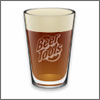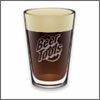flyangler18
Well-Known Member
Found this recipe while thumbing through the Classic Beer Style Guide for Mild Ale; this ain't no mild that we know at 1.060 and nearly 60 IBUs! I'm redacting it down to an 'experimental' volume of 3 gallons into the fermenter.
Interesting to see how the style evolved into the modern dark mild.
Caveat: I made minor substitutions from the recipe found in the book referenced above, swapping Challenger for the 2 oz of Goldings specified to keep hop vegetal matter to a minimum and Aromatic to approximate Amber Malt.
I've got about 10 minutes left for the saccharification rest.
[size=+2]Maclays's 56/Mild Ale (c. 1909)[/size]
[size=+1]23-A Specialty Beer[/size]

Size: 3.0 gal
Efficiency: 80%
Attenuation: 75.0%
Calories: 194.38 kcal per 12.0 fl oz
Original Gravity: 1.058 (1.026 - 1.120)
|=============#==================|
Terminal Gravity: 1.015 (0.995 - 1.035)
|===============#================|
Color: 16.69 (1.0 - 50.0)
|=============#==================|
Alcohol: 5.74% (2.5% - 14.5%)
|============#===================|
Bitterness: 62.4 (0.0 - 100.0)
|=================#==============|
[size=+1]Ingredients:[/size]
4 lb Maris Otter Pale Ale Malt
2 oz British Black Patent
.5 lb Aromatic Malt
1.5 lb White Wheat Malt
1.25 oz Challenger (8.0%) - added during boil, boiled 60 min
[size=+1]Schedule:[/size]
Ambient Air: 70.0 °F
Source Water: 60.0 °F
Elevation: 0.0 m
00:03:00 Dough-In - Liquor: 2.0 gal; Strike: 164.93 °F; Target: 152 °F
01:03:00 Sacch Rest - Rest: 60 min; Final: 152.0 °F
01:33:00 Lautering - First Runnings: 0.0 gal sparge @ 152 °F, 10.0 min; Sparge #1: 1.4 gal sparge @ 175 °F, 10.0 min; Sparge #2: 1.4 gal sparge @ 175 °F, 10.0 min; Total Runoff: 4.17 gal
[size=-1]Results generated by BeerTools Pro 1.5.2[/size]
Interesting to see how the style evolved into the modern dark mild.
Caveat: I made minor substitutions from the recipe found in the book referenced above, swapping Challenger for the 2 oz of Goldings specified to keep hop vegetal matter to a minimum and Aromatic to approximate Amber Malt.
I've got about 10 minutes left for the saccharification rest.
[size=+2]Maclays's 56/Mild Ale (c. 1909)[/size]
[size=+1]23-A Specialty Beer[/size]

Size: 3.0 gal
Efficiency: 80%
Attenuation: 75.0%
Calories: 194.38 kcal per 12.0 fl oz
Original Gravity: 1.058 (1.026 - 1.120)
|=============#==================|
Terminal Gravity: 1.015 (0.995 - 1.035)
|===============#================|
Color: 16.69 (1.0 - 50.0)
|=============#==================|
Alcohol: 5.74% (2.5% - 14.5%)
|============#===================|
Bitterness: 62.4 (0.0 - 100.0)
|=================#==============|
[size=+1]Ingredients:[/size]
4 lb Maris Otter Pale Ale Malt
2 oz British Black Patent
.5 lb Aromatic Malt
1.5 lb White Wheat Malt
1.25 oz Challenger (8.0%) - added during boil, boiled 60 min
[size=+1]Schedule:[/size]
Ambient Air: 70.0 °F
Source Water: 60.0 °F
Elevation: 0.0 m
00:03:00 Dough-In - Liquor: 2.0 gal; Strike: 164.93 °F; Target: 152 °F
01:03:00 Sacch Rest - Rest: 60 min; Final: 152.0 °F
01:33:00 Lautering - First Runnings: 0.0 gal sparge @ 152 °F, 10.0 min; Sparge #1: 1.4 gal sparge @ 175 °F, 10.0 min; Sparge #2: 1.4 gal sparge @ 175 °F, 10.0 min; Total Runoff: 4.17 gal
[size=-1]Results generated by BeerTools Pro 1.5.2[/size]




